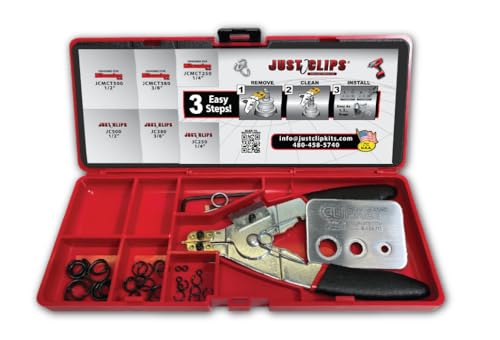
If you are planning to do any kind of home improvement or repair work, one tool that you will definitely need is a caulk gun. A caulk gun is a simple but essential tool that allows you to apply caulk or sealant in a controlled and precise manner.
Using a caulk gun may seem intimidating if you have never used one before, but with a little practice and guidance, you will be able to use it like a pro. In this article, we will guide you through the steps of using a caulk gun and give you some tips and tricks to ensure a clean and professional-looking finish.
Step 1: Prepare the surface
Before you start using the caulk gun, it is important to prepare the surface that you will be applying the caulk or sealant to. Make sure the surface is clean and dry, free from any dust, dirt, or debris.
Pro tip: Use a scraper or a putty knife to remove any old caulk or sealant from the surface. This will ensure better adhesion and a longer-lasting result.
Understanding Caulk Guns
A caulk gun, also known as a caulking gun or a sealant gun, is a handheld tool designed to apply caulk or sealant to various surfaces. It is commonly used in construction, woodworking, and DIY projects to seal gaps, joints, and cracks, prevent leaks, and create a smooth, finished appearance.
Types of Caulk Guns
There are different types of caulk guns available, each designed for specific applications and preferences. The most common types are:
- Manual Caulk Gun: This type of caulk gun requires manual force to push the caulk out of the tube. It is operated by pulling a trigger or squeezing a hand lever, which pushes a plunger and dispenses the caulk. Manual caulk guns are durable, affordable, and suitable for small to medium-sized projects.
- Battery-Powered Caulk Gun: Battery-powered caulk guns are equipped with a rechargeable battery that provides the necessary force to dispense the caulk. These guns are more convenient to use and require less effort compared to manual caulk guns. They are ideal for larger projects or for users with limited hand strength.
- Pneumatic Caulk Gun: Pneumatic caulk guns are powered by compressed air and are commonly used in professional construction settings. They offer high efficiency and can dispense caulk at a fast rate. These guns require an air compressor to operate.
Parts of a Caulk Gun
A typical caulk gun consists of several key parts, including:
| Part | Description |
|---|---|
| Frame | The frame is the main body of the caulk gun and holds all the other components together. |
| Trigger or Hand Lever | The trigger or hand lever is used to initiate the caulk flow by pressing or squeezing it. |
| Plunger | The plunger is a rod that pushes on the caulk or sealant tube, forcing it out of the nozzle. |
| Nozzle | The nozzle is the tip of the caulk gun where the caulk is dispensed. It can be cut to different sizes depending on the desired bead thickness. |
| Release or Dripless Mechanism | Some caulk guns are equipped with a release or dripless mechanism that prevents the caulk from oozing out when the trigger is released. |
| Carriage | The carriage holds the caulk or sealant tube and allows it to move forward as the trigger or hand lever is squeezed. |
Understanding the different types of caulk guns and their parts is essential for using the tool effectively and achieving professional-looking results. Whether you are a seasoned professional or a DIY enthusiast, knowing how to use a caulk gun properly will save you time and help you achieve a neatly sealed finish.
Preparing the Caulk Gun
Before you begin using a caulk gun, it is important to properly prepare the tool for optimal performance. Follow these steps to prepare your caulk gun:
1. Inspect the caulk gun: Before using a caulk gun, carefully inspect the tool for any damage or defects. Check for any cracks or breaks in the frame or nozzle that may affect its functionality. If you notice any issues, replace the caulk gun with a new one.
2. Choose the right caulk: Select the appropriate caulk for your project. There are different types of caulk available, such as silicone, latex, or acrylic. Consider the surface you will be caulking and the intended use of the caulk to ensure you choose the right product.
3. Prepare the caulk tube: Before loading the tube into the caulk gun, cut the tip of the caulk tube at a 45-degree angle using a utility knife. Be sure to cut a small opening that will allow you to control the flow of caulk. Use a nail or wire to puncture the inner seal of the tube.
4. Load the caulk tube: Once the caulk tube is prepared, place it into the caulk gun. Open the caulk gun by pulling back on the rod or handle, then insert the caulk tube into the gun. Make sure the nozzle is facing forward and the punctured seal is at the back. Close the caulk gun by releasing the rod or handle, securing the caulk tube in place.
5. Prime the caulk gun: Before you begin applying caulk, it is important to prime the caulk gun. To do this, pull back on the rod or handle until the caulk begins to flow from the nozzle. This will ensure that the caulk is properly dispensed when you squeeze the trigger.
By following these steps, you can properly prepare your caulk gun for use. Taking the time to inspect, choose the right caulk, prepare the caulk tube, load it into the caulk gun, and prime the tool will help ensure a smooth and effective caulking process.
Using the Caulk Gun
Step 1: Prepare the caulk gun by pulling back the rod and inserting the caulk tube into the gun. Make sure the tube is securely in place before moving on to the next step.
Step 2: Cut the tip of the caulk tube at a 45-degree angle using a utility knife. The size of the opening will depend on the size of the bead you want to apply.
Step 3: Insert a long nail or wire into the tip of the tube to open the seal. Some caulk tubes may have a built-in seal puncture tool. If that’s the case, use the tool to open the seal.
Step 4: Load the caulk gun by pulling the trigger and pushing the rod forward until the caulk appears at the tip of the tube. This process is known as “priming” the gun.
Step 5: Position the caulk gun at a 45-degree angle to the surface you want to caulk. Hold the gun with one hand and use the other hand to pull the trigger. Apply steady pressure to create a consistent bead of caulk.
Step 6: Move the caulk gun along the desired caulk line, releasing pressure on the trigger to stop the flow of caulk. Continue applying caulk until you have completed the desired area.
Step 7: Smooth the caulk bead with a caulk smoother, finger, or damp cloth before it starts to dry. This will create a neater finish and help the caulk adhere better.
Step 8: Allow the caulk to dry according to the manufacturer’s instructions before painting or exposing it to moisture.
Note: Always wear appropriate protective gear, such as gloves and safety glasses, when using a caulk gun.






